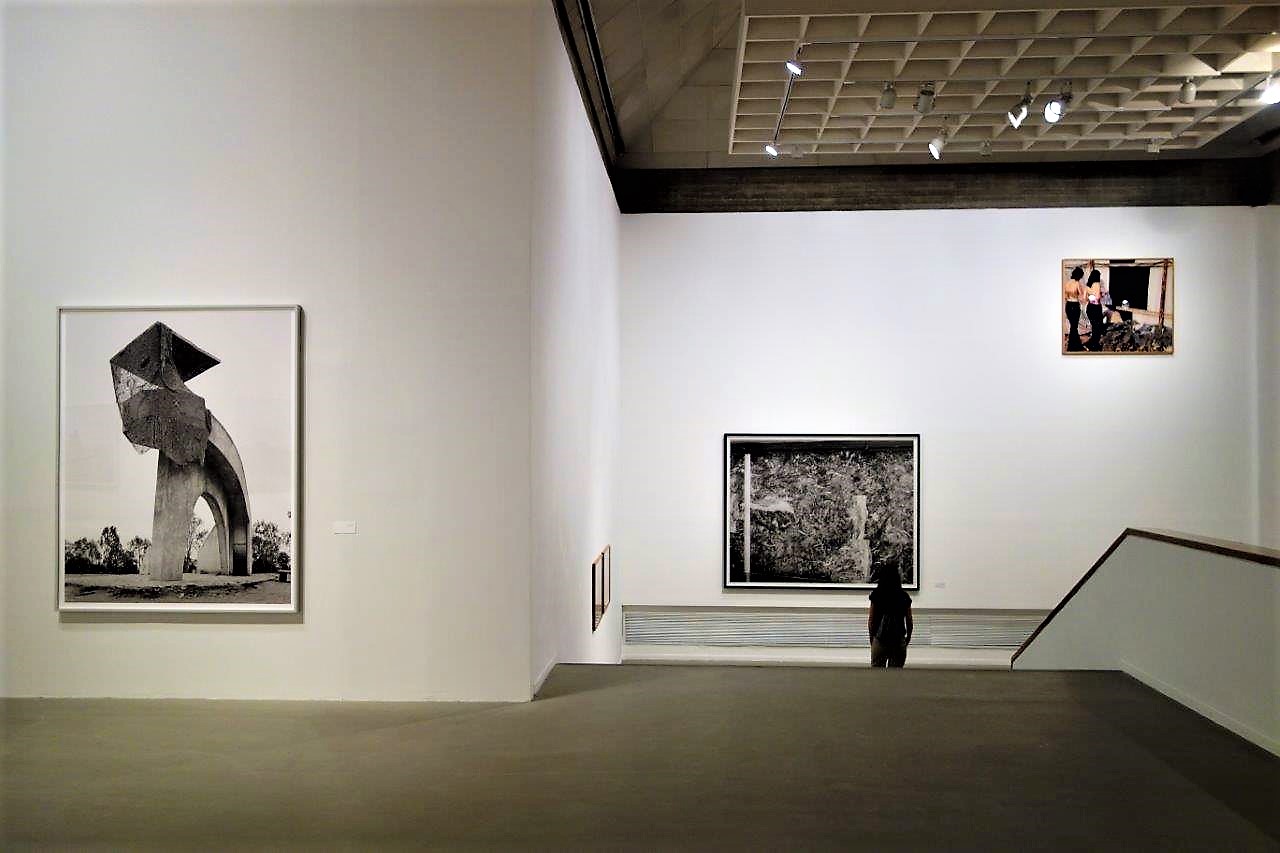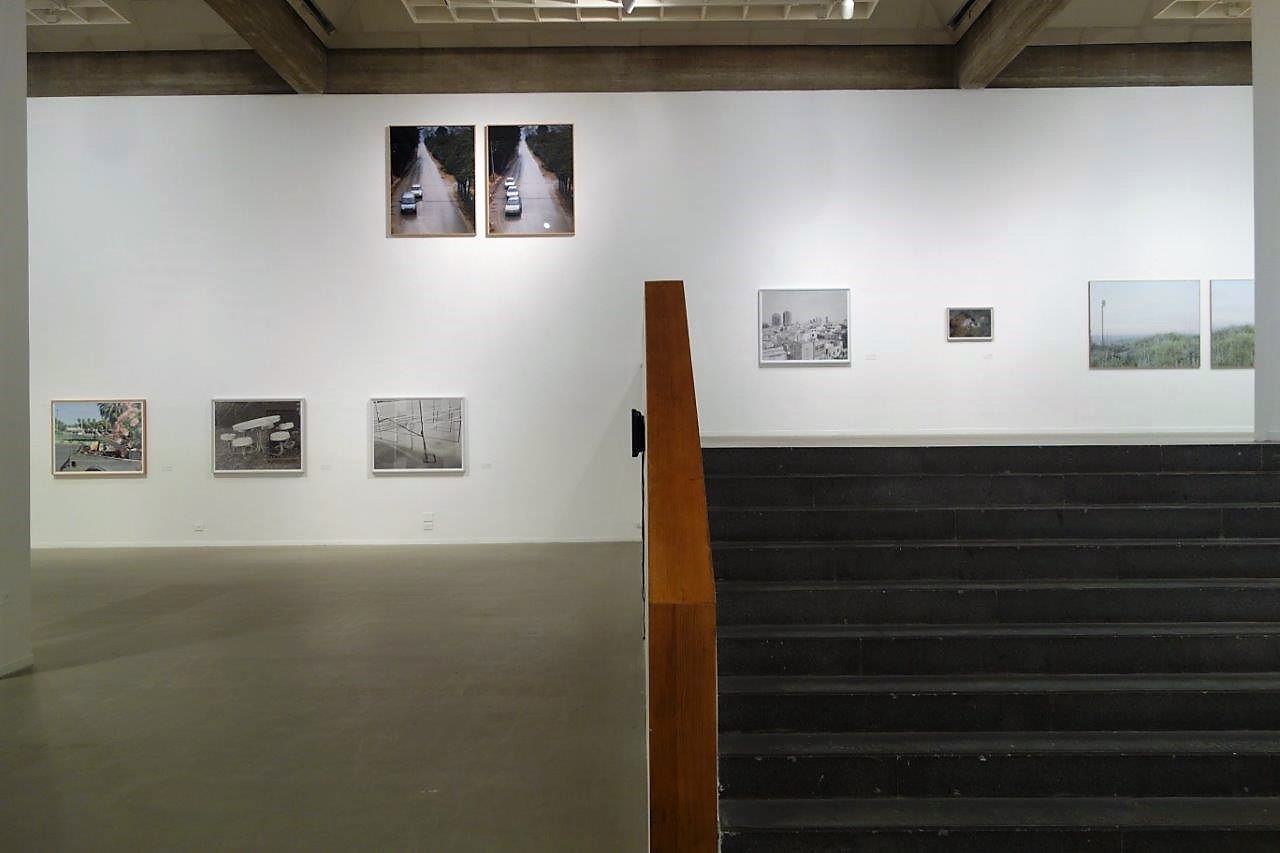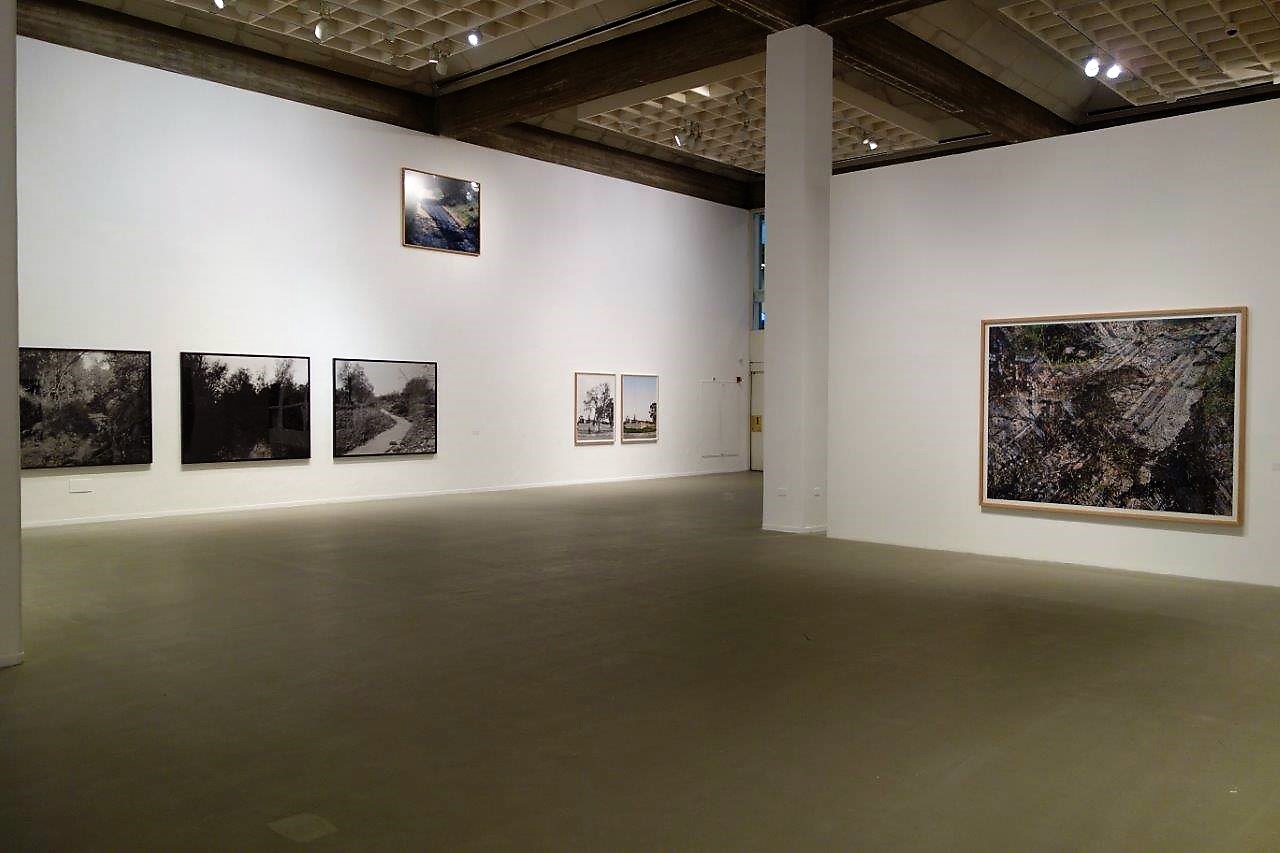It all began with a doubt – about photography, about its ability to address the contemporary, about its capacity to contribute to discourse. And so the first works by Sharon Ya‘ari broke the uniform mould of the photographic image by alternating Israeli landscapes with discarded images he had found, with photographs of eastern Europe, of Jewish communities in Pinsk and Turike – showing events such as the opening of schools and hospitals, and emigration to America or Palestine. Photoshop was used to extract portraits from the found footage and to meld these faces from the past with landscapes of the present, amalgamating them into new visual realities. Like a sorcerer’s apprentice conjuring new presences, Ya‘ari created another state, another time, through a fragile alchemy of then and now.
In his subsequent colour works he digitally collaged and montaged pictures from various eras to create multi-layered individual images. Each one is a single shot, but is directed in such a way that it fragments its own potential meanings, prompting different individual perceptions. Groups of people, families perhaps, can be seen making their way to the spectacle, lasting only a few days, of the iris fields in bloom. Yet they look as though they are going to a funeral, or at least to some family gathering of great import. In another photograph, coloured, indeed colourful, and even though faded and dusty, almost lurid plastic chairs with cut-out backs, like lungs, to make sitting on plastic in the heat of the summer more bearable, make for a pleasing and cheerful image until we notice, amidst the bright-hued clutter, that we are actually looking at a funeral chapel. The arrangement of these chairs in the simple room reads like the furnishing of a family constellation. We see three young women, dressed almost identically in flared jeans and skimpy, bare-shouldered summer tops, clambering through a corrugated metal barrier. One of the three women is already hunkered down to pass under a metal bar, as though crossing into the nocturnal darkness of some realm that cannot be discerned in the picture. The tangible atmosphere of a relaxed summer stroll contrasts with the uncertainty and gloom of the yawning visual abyss. In another photograph, a patch of tarmac – asphalt deposited and rolled out three or four centimetres thick – stretches along a forest path like a black tongue. The tongue is frayed, as though the material had run out. The saying “to speak with forked tongue” springs to mind here, yet if we “listen” carefully, this tongue of tar in the forest seems to speak of the absurdity to be found in small everyday acts.
In these colour photographs, Sharon Ya’ari returns to a simple, observational photography; one that observes directly but cautiously, framing contradictions, layers of overlapping meaning that reveal themselves only gradually. He has remained faithful to this form of photography ever since, though constantly undermining it by questioning the medium and filling it with reflections on the photographic gaze. What is shown and with what purpose? From which position? And how? And what does it reveal? What has just been achieved and accomplished is called into question, as is what is in demand and fashionable internationally. So, abandoning colour in photography was only a question of time.



